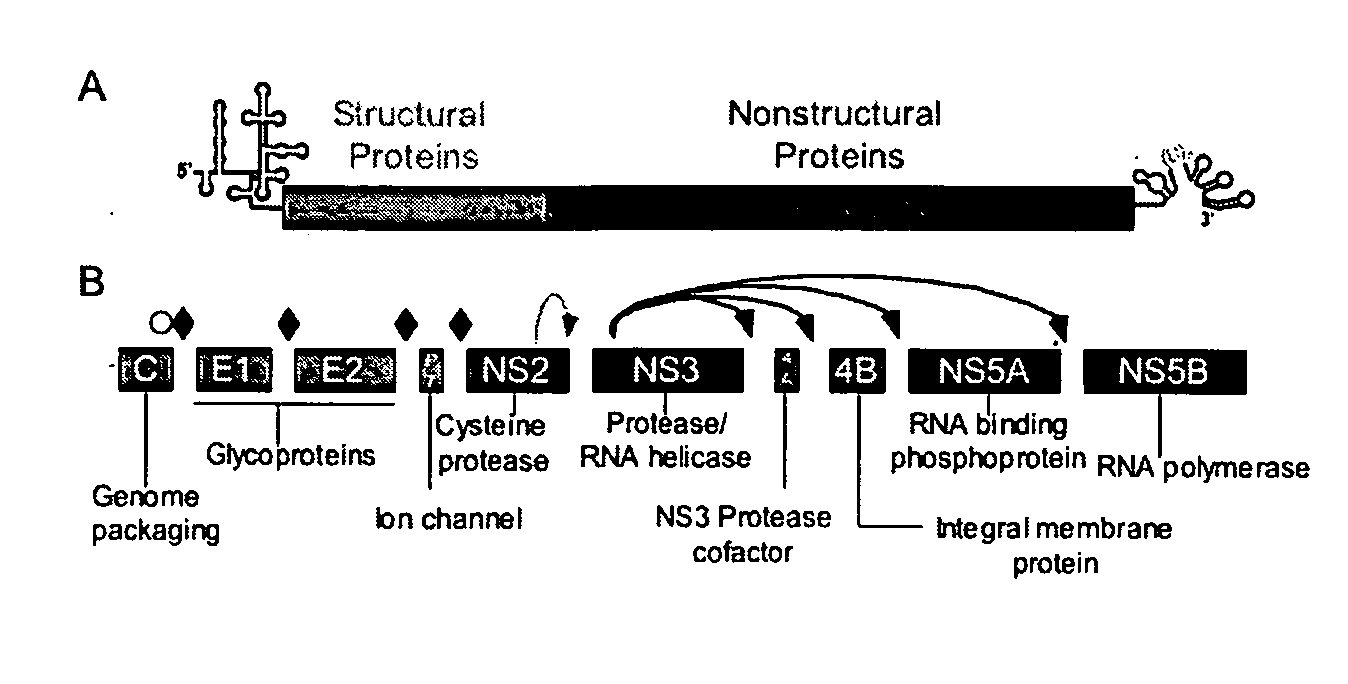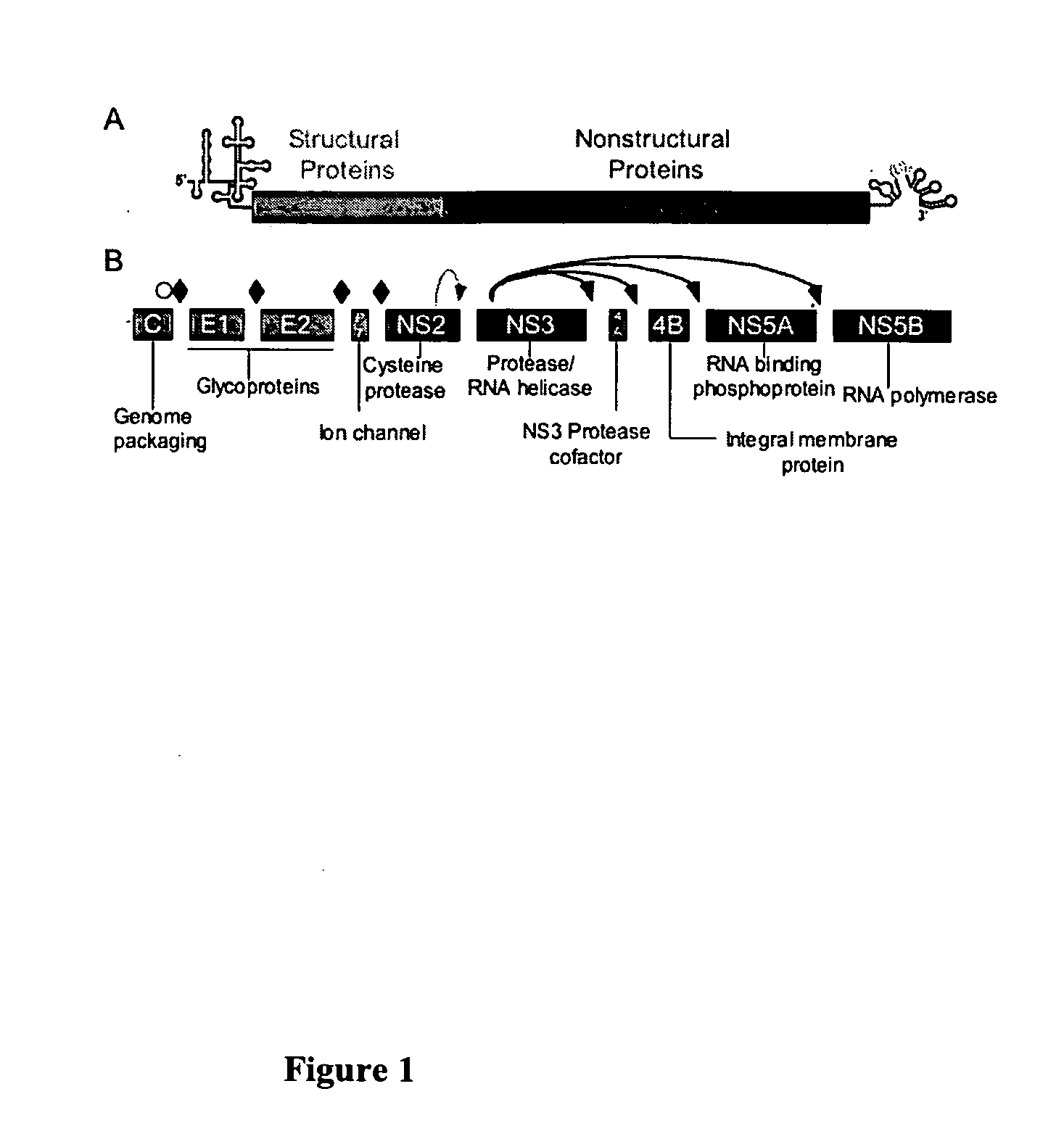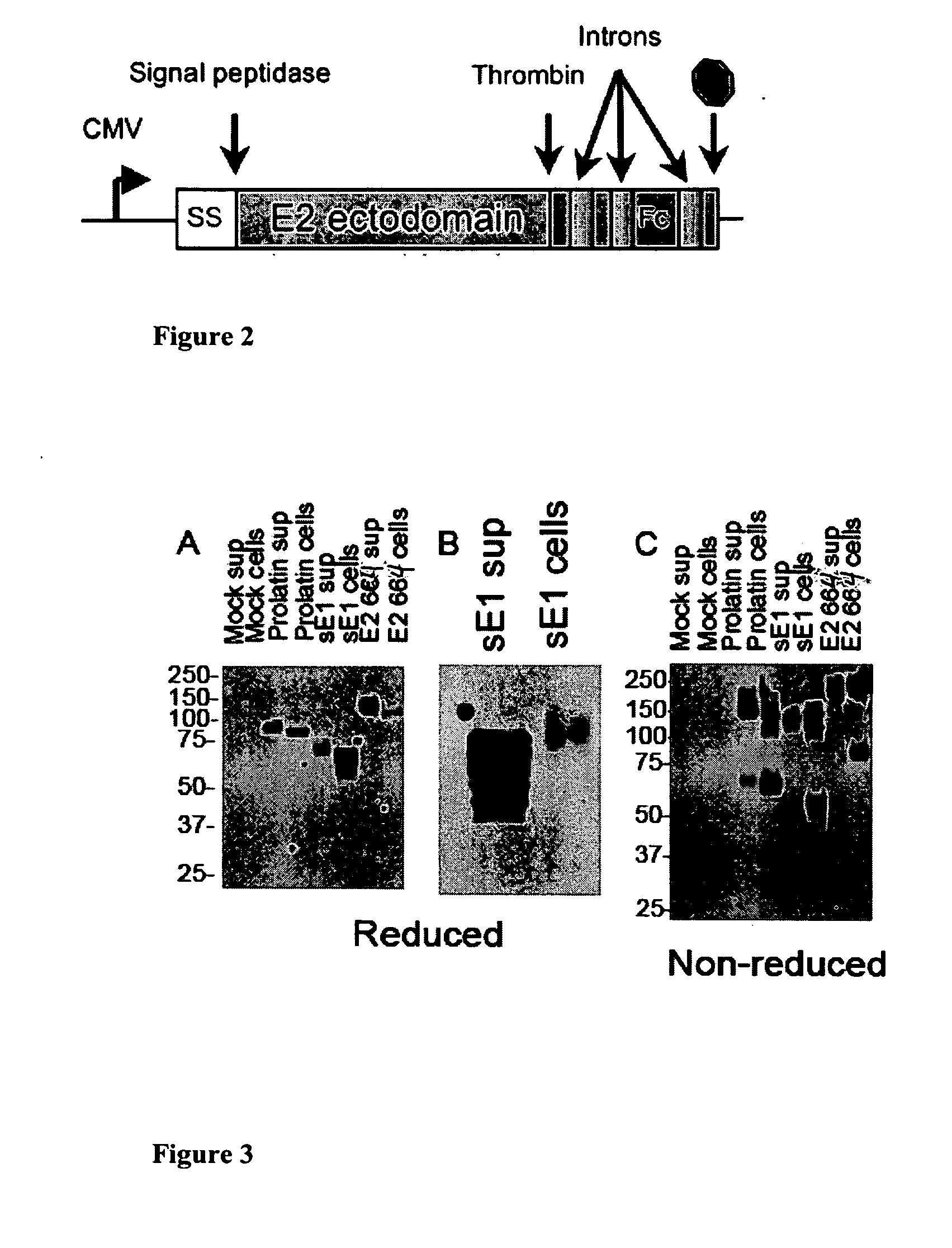Hcv e2 construct compositions and methods
a construct and composition technology, applied in the field of hcv e2 construct compositions and methods, can solve the problems of improper folding and use of proteins, and achieve the effects of robust immune response, high specificity and affinity
- Summary
- Abstract
- Description
- Claims
- Application Information
AI Technical Summary
Benefits of technology
Problems solved by technology
Method used
Image
Examples
example 1
[0055]Production of eE2 Stable Cell Lines. HEK293T cells were cultured in Dulbecco's Modified Eagle Medium supplemented with 10% FBS (DMEM10). A 6-well plate was seeded with 0.5×106 cells per well and the pPro-eE2-Fc vector (from J6 strain) was transfected the following day using FuGene-HD (Roche Diagnostics, Basel, Switzerland). After three days, the cells were placed under hygromycin (Calbiochem, San Diego, Calif.) selection at 75 μg / ml. Individual colonies were selected, expanded, and tested for eE2-Fc expression using an anti-Fc ELISA.
example 2
[0056]ELISA for eE2-Fc. MaxiSorp plates (Nunc, Thermo Fisher Scientific, Rochester, N.Y.) were coated with 100 μL of supernatant for two hours at room temperature. The wells were washed 3× with 200 μL of PBS+0.05% Tween-20 (PBS-T), then blocked with 200 μL of 2% BSA in PBS-T for one hour at room temperature. After three more washes with PBS-T, 100 μL of goat anti-Fc antibody (Pierce, Thermo Fisher Scientific, Rochester, N.Y.) at 1:15,000 dilution (in PBS-T) was incubated for one hour at room temperature. The ELISA was developed with TMB substrate (Pierce) and quantified using the SpectraMAX 250 plate reader and SOFTMax 2.6 software.
example 3
[0057]Expression and Purification of eE2. The supernatant from stable cell lines of Example 1 was harvested, centrifuged to remove cellular debris, and filtered through a 0.22 μm membrane. The eE2-Fc protein was applied to protein A-conjugated resin (GE Healthcare, Piscataway, N.J.) overnight with gentle rocking. The resin was pooled together the next day, washed with buffer (50 mM HEPES pH 7.5, 150 mM KCl, 5% glycerol), and incubated with thrombin protease (GE Healthcare, Piscataway, N.J.) to release the protein from the Fc tag. After cleavage, the protein eluate was consolidated and the concentration determined by Bio-Rad Protein Assay. The protein was analyzed by SDS-PAGE and Coomassie staining. Yields are found to be about 2 mg of eE2 per liter of supernatant.
PUM
| Property | Measurement | Unit |
|---|---|---|
| pH | aaaaa | aaaaa |
| pH | aaaaa | aaaaa |
| pH | aaaaa | aaaaa |
Abstract
Description
Claims
Application Information
 Login to View More
Login to View More - R&D
- Intellectual Property
- Life Sciences
- Materials
- Tech Scout
- Unparalleled Data Quality
- Higher Quality Content
- 60% Fewer Hallucinations
Browse by: Latest US Patents, China's latest patents, Technical Efficacy Thesaurus, Application Domain, Technology Topic, Popular Technical Reports.
© 2025 PatSnap. All rights reserved.Legal|Privacy policy|Modern Slavery Act Transparency Statement|Sitemap|About US| Contact US: help@patsnap.com



